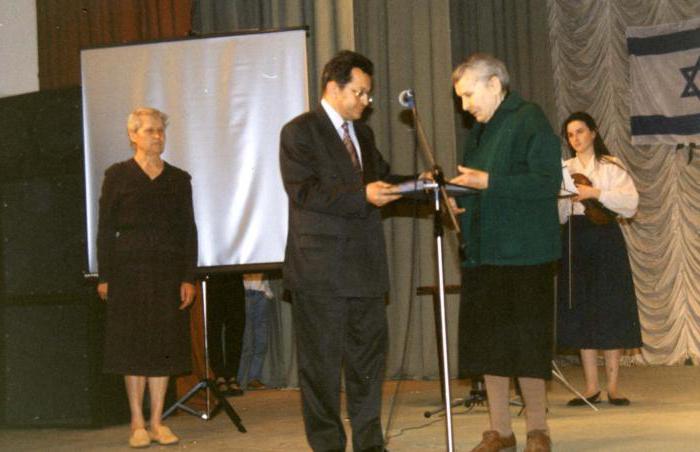Maria Borisovna Osipova is a well-known underground anti-fascist. Operated in Minsk. During the occupation, she organized the first underground group there. Helped to develop a plan and participated in the liquidation of William Kube (High Commissioner of Belarus). In 1943 she became a Hero of the Soviet Union. In this article we will describe her brief biography.
Childhood
Maria Osipova (nee Sokovtsova) was born in 1908 in the Mogilev province. Parents of the girl worked at a local glass factory. Maria began working from the age of 13. Like her parents, she got a job at a glass factory. The future underground worker was also actively involved in social and political work. Sokovtsova led the regional organization of pioneers. In 1924, the girl attended the 6th congress of the RKSM, where she was elected a delegate. It was there that she met with Jacob Osipov, whom she eventually married.
Study
In 1933, Maria moved to Minsk with her family. There, the future heroine submitted documents to the Higher Agricultural School of Lenin. Two years later, she successfully graduated from it. In 1940, Maria Osipova (photo below) defended her diploma at the Minsk Law Institute. After that, she was assigned to work in the Supreme Court of the Byelorussian SSR.
Start of war
When the occupation of Minsk began, Maria Osipova, together with A. A. Sokolova (teacher at the Law Institute) organized the first underground anti-fascist group. Initially, it consisted of only 14 participants. But by September 1943, there were already 50 active members in the group of Ganna Black. Underground workers helped their prisoners of war, hid Jews, distributed Sovinformburo reports and leaflets. After establishing contact with the partisans (in 1941), they were often involved in reconnaissance and sabotage operations. In the same year, the Minsk conspiratorial city committee joined the group. Maria Osipova was appointed a liaison between the leadership of the underground and several partisan detachments. Among them: the 200th name of Rokosovsky, “Zheleznyak”, the “Uncle Kolya” brigade, “Local”, “Dima”.
Killing cuba
Operation Retribution has become the largest in the underground activities of the heroine of this article. In the course of it, Wilhelm Kube, who served as the General Commissioner of Belarus, was liquidated. He was responsible for the deaths of a large number of civilians. The operation was based on data obtained thanks to the intelligence work of N.P. Fedorov. Using the available information, the deputy commander of the Dima detachment gave Maria Borisovna the assignment. Osipova was supposed to recruit an agent from among those who worked in the house of Cuba. Soon, N.V. Pokhlebaev introduced her to a girl named Valentina Shutskaya. The latter was the sister of Elena Mazanik, who worked as a servant in the house of Cuba. It was Shutskaya who organized the meeting between Mazanik and Osipova. As a result, the underground members persuaded Elena to their side. On September 20, 1943, Maria Osipova, risking her own life, delivered a mine with a chemical fuse to the capital of Belarus. In order not to arouse suspicion, the girl disguised her in a basket with lingonberries. Then Maria handed it to Elena, who laid explosives under the general's bed mattress. The device worked on the night of September 22, 1943. Wilhelm Kube did not survive. Osipova and Mazanik as active participants in the operation were awarded the titles of heroes of the USSR.

After the war
When the Red Army liberated Belarus, the successful underground worker returned to Minsk. There, Maria Osipova, whose biography was presented above, was actively involved in the process of restoring the city destroyed by fighting. Then she got into politics, heading the department of pardon under the Presidium of the Supreme Council of Belarus. Also, Maria Borisovna was a member of the republican Peace Committee and the Supreme Court of the country. From 1947 to 1963 she worked as a deputy.
Osipova’s great merit is that she actively participated in the rehabilitation of members of the Belarusian underground, who were unfairly accused of collaborating with the Germans. The woman vouched for several hundred people in anti-fascist groups. After retiring, Maria Borisovna participated in the veteran movement and was engaged in patriotic education of the younger generation. Osipova died in 1999. Her grave can be found at the Eastern (Moscow) cemetery in Minsk.